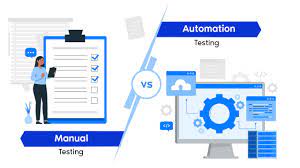
Automation testing and manual testing are two distinct approaches utilized in the world of eLearning to ensure that learners receive a high-quality educational experience. Each type of testing has its own sets of advantages and areas where one might have the edge over the other, influencing the preference for one method over the other depending upon the context of the eLearning project.
Automation Testing in eLearning
Automation testing involves the use of automated tools to execute pre-scripted tests on the eLearning software before it is released. In automation testing, testers write code/test scripts to automate the execution of test cases. This allows for repetitive testing scenarios to be conducted efficiently and can save time in the long-run.
Advantages:
– Efficiency: Automation increases the speed of test execution and can run tests 24/7 without intervention.
– Consistency: Automated tests perform the same steps precisely every time they are run, ensuring test consistency.
– Coverage: It allows for more extensive coverage since more tests can be executed in a shorter time.
– Regression Testing: It is ideal for regression testing as automated tests can be easily repeated with each new release to check that existing functionality is not broken.
Drawbacks:
– Setup Cost: Implementing automated testing requires an upfront investment in tools and training.
– Maintenance: Test scripts need regular updates to keep up with software changes.
– Not Suitablefor All Tests: Some tests, involving usability or user experience, might not be efficiently covered by automation.
Manual Testing in eLearning
Manual testing is conducted by a tester who performs various operations on the eLearning application to ensure it behaves as expected. The tester acts as an end-user and verifies all features for correct functionality manually.
Advantages:
– Human Insight: Humans can perceive visual cues and judge subjective components such as ease of use or design that automated tests may overlook.
– Low Initial Costs: There’s no need for sophisticated tools or scripts, so manual testing can be cheaper initially.
– Flexibility: Testers can quickly adapt and explore different aspects of the application without needing new tests/scripts.
Drawbacks:
– Time-consuming: Manual testing takes up more time, especially with larger systems as each test scenario is conducted manually.
– Prone to Errors: Since humans conduct tests, there’s a higher chance of missing bugs due to fatigue or oversight.
– Less Effective for Large Scale Testing: Manual Testing isn’t suitable for instances where repetitive large-scale test execution is needed.
In conclusion, both automation and manual testing play crucial roles in eLearning. Automation excels in saving time and effort when running repetitive tasks and regression tests while ensuring consistency across test cases. On the other hand, manual testing is unbeatable when it comes to exploratory testing, providing insightful feedback from a human perspective especially related to user interfaces and experiences. Ideally, a balanced approach that leverages both automation and manual testing specific to an organization’s needs will deliver a robust eLearning platform that stands up to rigorous educational demands.
